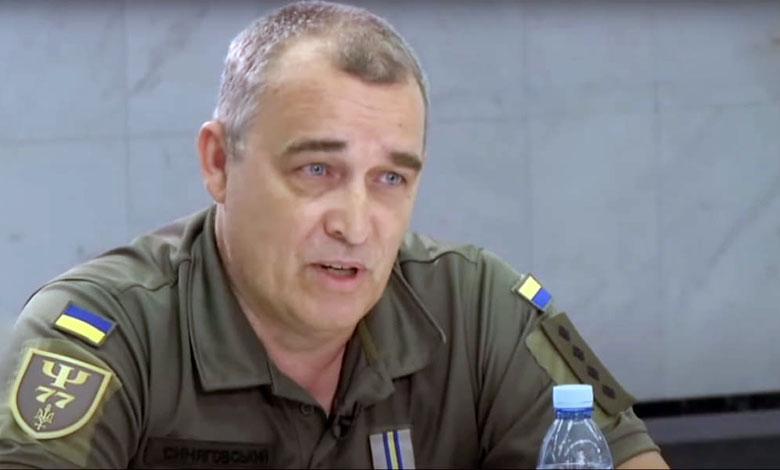Psychiatrist Vladyslav Sinyahovsky spoke about ketamine-assisted therapy: why it is important for military personnel and war victims

After the start of a full-scale war in Ukraine, the issue of mental health gained special importance. Military personnel, veterans, and civilians who have experienced combat operations, shelling, casualties, or systemic stress are increasingly turning to medical professionals. Against this background, there is growing interest in the medical community for new methods of therapy that may be effective for people with post-traumatic stress disorder or chronic depression that does not respond to standard treatment. One such method is ketamine-assisted psychotherapy, a direction that is gradually gaining recognition in clinical practice. Your vision of this therapy, its opportunities and challenges laid out psychiatrist, psychotherapist and military psychologist Vladyslav Siniagovskyi.
A doctor focusing on ketamine-assisted psychotherapy as a new game-changing tool in the treatment of post-traumatic stress disorder (PTSD) and treatment-resistant depression. Siniagovsky believes that we are already in the era of this “quiet revolution” – not yet fully recognized, not fully realized, but one that changes fundamental approaches to therapy. It is clinical experience that prompts the use of new agents, and ketamine is one of them.
As the doctor explains, the drug was created back in the 60s and was actively used during the Vietnam War. For more than two decades, it has been used in psychotherapeutic practice in many countries of the world, and in Ukraine since 2018. It is not about full anesthesia, but about subanesthetic, extremely small doses that cause a controlled altered state of consciousness. It is in this state that psychotherapeutic work with trauma takes place.
According to Syniagovskyi, the discussion of this method in Ukraine is particularly relevant, considering the number of servicemen who have undergone or are undergoing combat operations. Now, according to his estimates, more than a million Ukrainians have experience at the front, and approximately 150,000-200,000 of them may need specialized psychiatric care. He points out that 15-20% of combat veterans are at risk of developing clinically significant PTSD. However, before a formal diagnosis, symptoms of chronic combat mental trauma are often already present, a condition that leaves deep scars without proper treatment.
The psychiatrist notes that, apart from PTSD, another layer of psychological stress is formed – the so-called “shadow wave”. It includes depression, anxiety disorders, despair, suicidal thoughts, panic attacks, loss of meaning. No less serious is the phenomenon of acute stress reactions (ASRs), which occur as a result of massive missile strikes on the civilian population. In cases where traditional methods of treatment are ineffective, there is a need to look for an alternative. This is where the space for ketamine comes in.
Siniagovsky draws attention to the fact that in world practice there are various protocols for the use of ketamine in therapy, in particular the so-called “Montreal model”. It involves a course of six intravenous infusions over three to four weeks, combined with integrative psychotherapy. At the same time, the main thing is not ketamine itself, but the therapeutic space that is created around it. This space includes preparation for the experience, a safe environment, supervised accompaniment, psycho-emotional support during the sessions and further integration therapy.
The psychiatrist describes the effect of ketamine as the opening of a “window of neuroplasticity” — a moment when the brain is ready to change response stereotypes, release frozen emotions, integrate fragmented parts of experience. In this window, as he puts it, there is a chance for not superficial relief, but for deep healing. Despite this, there is still a stigma about the use of ketamine in Ukraine. In society, there is no similar vigilance regarding products that also affect the psyche, such as chocolate, caffeine, alcohol, tobacco, instead, a drug that has long been and successfully used in controlled medical conditions is stigmatized. The doctor emphasizes that ketamine is often mistakenly equated with recreational drugs, although it does not cause euphoria, but on the contrary, helps to touch hidden pain, allows you to experience difficult experiences in a safe therapeutic space.
He points out that there are ongoing studies around the world looking at the effects of psychedelics — MDMA in particular. This drug has also shown high effectiveness in the treatment of PTSD, but is still in the process of legalization. Instead, ketamine already has an official status and is used on the recommendation of the American Psychiatric Association for the treatment of a wide range of disorders, from anxiety-depressive conditions to PTSD. In terms of effectiveness, its results are close to MDMA.
That is why, according to Syniagovsky, it is time to implement ketamine therapy — carefully, professionally, but fearlessly. He is convinced: the paradigm shift is already underway. Research shows that this approach not only reduces anxiety and depression, but also helps a person to rethink his own experience, change life patterns, see himself differently.
This therapy is especially valuable for military personnel who have lost their inner strength and sense of security. According to Syniagovsky, ketamine does not “cure” trauma, but creates conditions under which a person can see it, experience it and not break down. And to come out of this experience already different – with a new idea about yourself, about your path. However, it is not about a “magic pill”. It is just a tool that should be in the hands of a professional team. He believes that it is necessary to train specialists, develop safe protocols, integrate a new approach into the health care system, and support scientific and clinical initiatives in this area.
In conclusion, Syniagovsky emphasizes: in his practice, he sees every day how a glimmer of hope appears where there were years of pain. Sometimes one session is enough for the patient to say: “The brain has rested and I want to live again.” The doctor believes that society has no right to ignore this tool, because the war will leave behind millions of traumatized people, and it is the duty of specialists to have answers.





